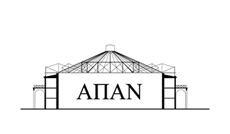El Cheikh, Byzantium Viewed by the Arabs (2004)
[Bibliography]
Nadia Maria El Cheikh, Byzantium Viewed by the Arabs, series Harvard Middle Eastern Monographs XXXVI (Harvard University Press, Cambridge, Massachusetts 2004)
First edition
This book studies the Arabic-Islamic view of Byzantium, tracing the Byzantine image as it evolved through centuries of contact, exchanges and warfare. Including previously inaccessible material on the Arabic textual tradition on Byzantium, this investigation shows the significance of Byzantium to the Arab Muslim establishment and their appreciation of various facets of Byzantine culture and civilization.
The Arabic-Islamic representation of the Byzantine Empire stretching from the reference to Byzantium in the Qur'an until the fall of Constantinople in 1453 is considered in terms of a few salient themes. The image of Byzantium reveals itself to be complex, non-monolithic, and self-referential. Formulating an alternative appreciation to the politics of confrontation and hostility that so often underlies scholarly discourse on Muslim-Byzantine relations, the book presents the schemes developed by medieval authors to reinterpret aspects of their own history, their own self-definition, and their own view of the world.
Contents: Preface pp. IX-XI. Introduction pp. 1-20: Arabic-Islamic Sources; A History of Alterity; The Temporal Evolution of Perception.
ONE The Encounter with Byzantium pp. 21-81: Byzantium in the Qur’ān: Sūrat al-Rūm; Early Contacts: Byzantine Military Leaders; An Exemplary Ruler: Emperor Heraclius; Byzantine Craftsmanship: A Window to Greatness; Constantinople: Sieges and Eschatology.
TWO Confronting Byzantium pp. 83-138: Byzantine Imperial Authority: Rank, Titulature, and Power; The Byzantine Emperors and Hārūm al-Rashīd; Byzantine Knowledge: Science and Philosophy; Shu‘ūbiyya and the “Discovery” of Pre-Islamic Byzantium; Homo Byzantinus: Criticism of Character and Practice; Byzantine Women: A Source of Fitna.
THREE Islam on the Defensive pp. 139-187: Constantinople: The City of Marvels; Ceremonial, or the Grandeur of Byzantium; Byzantine Revival: Islam on the Defensive; The Rise and Fall of Nicephorus Phocas; End of an Era: The Battle of Manzikert and the Fall of Jerusalem.
FOUR A New Reality: Revisiting Byzantium pp. 189-223: Homo Byzantinus: The New Christian Presence; Constantinople; The Fall. Conclusion pp. 223-230. Bibliography pp. 231-253. Index pp. 255-271.

